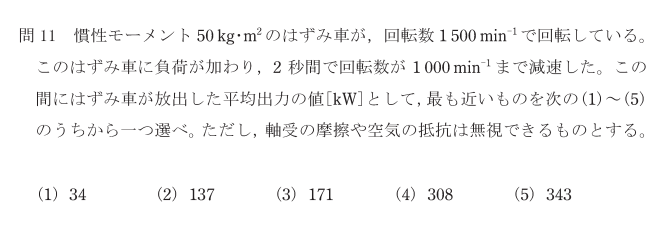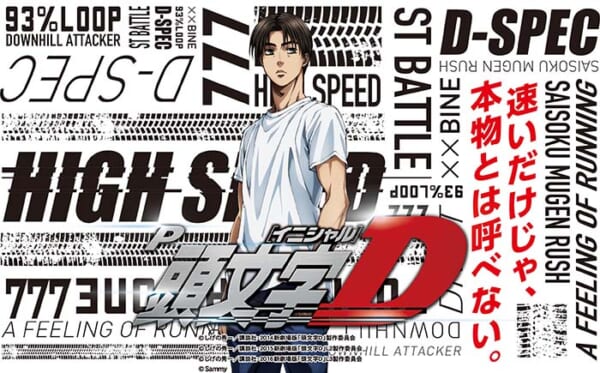プレイヤーの分類、ゲームエコノミーの評価、Stones of Jordan、Play-and-Earn、そして名前の重要性
Diablo IIは、アクション、ハックアンドスラッシュ、ダンジョン探索型のRPGで、現在でも人気があります。Diablo IIのプライベートサーバーであるPath of Diablo1や、Diablo IIIなどにも受け継がれています。また、Blizzardは来月Diablo II: Resurrectedを発売する予定ですが、これは素晴らしい出来栄えです。LFGです。
今日は、なぜDiablo IIが特定のプレイヤーにとって有効なのかについて話した後、そのゲーム内経済の研究に入り、その過程でゲーム分析のためのツールやゲームデザイナーのための教訓を紹介します。
Diablo II」をゲーム内経済に関する研究のポイントとして使い、ゲーム経済デザインの理解を深めるためにいくつかの新しい概念を導入します。
これだけ知っていれば、「Play to Earn」「Play and Earn」「名前の重要性」についてのセクションは読み飛ばしていただいてかまいません。
プレイヤーの分類
バートル・タクソノミーのプレイヤータイプ
プレイヤーはプレイスタイルによって(大まかに)グループ分けすることができます。なぜそうするのか?どのようなプレイヤーを惹きつけたいかを考え、それに応じて機能を販売することができるからです。また、彼らにアピールするゲームプレイ体験をデザインすることもできます。
クラブ(キラー) - 1%、カオスに突き動かされている。
ダイヤモンド(アチーブメント) - 10%、マスターベーションが原動力
ハート(社交家) - 80%、つながりによって動機づけされる
スペード(エクスプローラー) - 10%、発見することに動機づけされる
クラブ (キラー)
クラブの楽しみは...クラブ活動。クラブを頭の上に持ってくるようなもの。何度も。彼らはあなたのアバターを殺し、そしてあなたを嘲笑します。何度も。
ダイヤモンド(アチーブメント)
倒せるゲーム、達成感のあるゲームは、Diamondsの魅力です。これらの実績は、ゲームによって設定されることもあれば、プレイヤー自身が作り上げることもあります。DoubleAgentは、WoWで花を摘んでレベル110に到達するために、パンダレンのチュートリアル島で8000時間を費やしました:彼ら自身の功績です。リーダーボードがあれば、たとえプレイヤーが作成したものであっても、トップになるために努力することは分かっているはずです。
ハート(社交家)
ハートはつながりを楽しみます。他のプレイヤーと出会い、交流する機会を提供するゲームは、ハートを惹きつけます。彼らは、ゲーム内で他のプレイヤーと一緒に遊んだ思い出を大切にしています。ゲームは、彼らにとってオンラインで社交する理由であり、その逆ではありません。クールな服を着て、おしゃべりをしたり、ぶらぶらしたりするのが好きなのです。なお、これはゲームの外でも起こりうることです。
スペード(探検家)
掘ることが好きです。ゲーム内で少しずつ前進し、新機能や新しい体験を発見することを楽しみます。新しい驚きを発見し、それをコミュニティで共有する機会を与えてあげてください。
Why it’s appealing to players, generally
"Happiness is the feeling that power increases - that resistance is being overcome".2
How Diablo II appeals to individual archetypes
Diamonds love Diablo II because there’s a story, and a definite end to that story. They can also set out their own goals for loot, and for building the perfect character.3
Hearts love Diablo II too. You’re encouraged by the game to team up and play as groups. Diablo II allowed for you to add friends to your list, and blast messages to them. (Battle.net) Players rushed each other, and gave each other starter items. Diablo II, at heart, was really social for its time.
In-Flows and Out-Flows in In-Game Economies
This is the key piece to understand for play-and-earn games, and is crucial to their success or failure.
Game Economies must manage their currency in-flows (how money enters circulation in the game), and currency out-flows (how money exits circulation in the game).
We’ll expand on this definition in future articles, as well as zoom into sources of inflow and outflow for crypto-games. This is a theme we’ll continually return to: game economies.
First, I must impress on you that a game economy is far more complex than monitoring just the designated in-game currency. In fact, an in-game currency often isn’t enough, as we’ll soon learn from the true history of Diablo II.
Gold, Rings and Runes
In Diablo II, for our players to achieve their goals, they have to become stronger.
How do they become stronger?
They can level up, or get more items.
They could kill monsters by themselves and farm for items, but that takes forever, and they might not even get the correct items for their class. A Sorceress can’t do much with a pair of Claws, and an Assassin doesn’t have much use for a Staff.
They could get items from other players.
But how does one trade?
They either trade directly, or using a currency.
Diablo II has changed currencies three times in its history, and the currencies even change in value as the ladder (the season) goes on.
Gold
Diablo II had an in-game currency called gold, which the designers presumably intended to be the medium of exchange in-game. Here’s how gold enters and leaves the game.
In-Flows
Killing monsters
Selling items to in-game shopkeepers
Out-Flows
Repairing your items
Buying items from in-game shopkeepers
Gambling (gold sink)
Dying (you lose 20% of your gold, and drop the rest on the floor. How embarrassing.)
Gold ended up not being used as a medium of exchange. It was “virtually worthless” when trading with other players.4 Why? It was everywhere, had a max limit (you cannot hold more than a certain amount of gold), and was way too easy to get. None of the best items could be found by using gold either.
Items in the last act often sold for 35,000 gold, and the maximum expense one often had was a few thousand dollars. In addition, players could stack a stat called “gold-find” (up to 600%) to vastly increase the amount of gold dropped.
So transacting items became difficult. The users would have to barter for the items they’d like.
Eventually, the player base needed to decide on a currency.
They needed an item to serve as the standard of value to compare different desirable items. The item needed to be small enough to be carried around, but it also needed to be valuable enough so that you wouldn’t have to carry so many around.
Stone of Jordan (SoJ)
Players started using The Stone of Jordan as currency. It was a ring, that could be equipped.
Why? It wasn’t too common, but common enough to be used as a medium of exchange, and it fulfilled all the criteria above.
In-Flows
Killing monsters
Out-Flows
Players wearing them for their stats
(Eventually) Selling to merchants for the Uber Diablo event
Well, it worked well enough — until players discovered an exploit. Some say they were duplicated en-masse, such that they became effectively worthless.
Because of the massive over-supply, anyone holding value denominated in SoJs were instantly debased, and SoJs were no longer used to trade items.
What does this teach us? Currency can fall in and out of favor over history.
一般的にプレイヤーにとって魅力的な理由
「幸福感とは、力が増大すること、つまり抵抗が克服されることである」2。
Diablo IIが個々のアーキタイプにアピールする方法
ダイヤモンドは、ストーリーがあり、そのストーリーに明確な終わりがあることから、Diablo IIを好む。また、戦利品や完璧なキャラクターを作るために、自分なりの目標を設定することができます3。
ハートもまた、ディアブロIIが大好きです。このゲームでは、チームを組んでグループでプレイすることが推奨されています。Diablo IIでは、フレンドを自分のリストに追加し、メッセージを送ることができました。(Battle.net)プレイヤー同士はお互いを急がせたり、スターターアイテムをあげたりしていました。Diablo IIの本質は、当時としては実にソーシャルなものでした。
ゲーム内経済におけるインフローとアウトフロー
これは、プレイ&アーンのゲームで理解すべき重要な要素であり、その成否を左右するものです。
ゲームエコノミーは、通貨のインフロー(ゲーム内でお金が流通する方法)とアウトフロー(ゲーム内でお金が流通しなくなる方法)を管理する必要があります。
この定義については、今後の記事で詳しく説明し、暗号ゲームの流入・流出源についても触れていきます。これは、私たちが継続的に立ち返るテーマである「ゲーム経済」です。
まず、ゲーム経済とは、指定されたゲーム内通貨を監視するだけではなく、はるかに複雑であることを印象づける必要があります。実際、ゲーム内通貨だけでは十分でないことが多いのは、『Diablo II』の真実の歴史からすぐに分かることです。
ゴールド、リング、ルーン
Diablo II』では、プレイヤーが目標を達成するために、より強くなる必要があります。
どうすれば強くなれるのか?
レベルアップしたり、アイテムを手に入れたり。
自分でモンスターを倒してアイテムを手に入れることもできますが、それには時間がかかりますし、自分のクラスに合ったアイテムが手に入るとは限りません。ソーサレスがクローを使っても大したことはできないし、アサシンがスタッフを持ってもあまり意味がない。
彼らは他のプレイヤーからアイテムをもらうことができます。
しかし、どのように取引するのでしょうか?
直接取引するか、通貨を使うか、どちらかです。
Diablo IIはその歴史の中で3回通貨が変更されており、通貨はラダー(シーズン)が進むにつれて価値さえも変化する。
ゴールド
Diablo IIにはゴールドと呼ばれるゲーム内通貨があり、設計者はこれをゲーム内の交換媒体とすることを意図していたと推測される。ここでは、ゴールドがどのようにゲームに入り、どのように出て行くかを説明します。
インフロー
モンスターを倒す
ゲーム内ショップの店員にアイテムを売る
アウトフロー
アイテムの修理
ゲーム内ショップの店員からアイテムを買う
ギャンブル(ゴールドシンク)
死ぬ(所持金の20%を失い、残りを床に落としてしまう。恥ずかしい)
結局、ゴールドは交換手段としては使われなかった。他のプレイヤーとの取引では「事実上無価値」だったのです4。ゴールドはどこにでもあり、上限があり(一定量以上のゴールドを保有できない)、そしてあまりにも簡単に手に入るからです。最高のアイテムも、ゴールドを使っても手に入らない。
最終幕のアイテムは35,000ゴールドで売られていることが多く、最大でも数千ドルの出費になることがよくありました。さらに、プレイヤーは "ゴールドファインド "と呼ばれるステータス(最大600%)を重ねて、ドロップするゴールドの量を大幅に増やすことができた。
そのため、アイテムの取引は難しくなった。ユーザーは、欲しいアイテムを物々交換することになる。
やがて、プレイヤーは通貨を決定する必要があった。
そのためには、「欲しいもの」を比較するための「価値基準」となるアイテムが必要だ。持ち運べる大きさでありながら、たくさん持ち歩かなくてもいいような価値のあるアイテムが必要だったのです。
ヨルダンの石(SoJ)
プレイヤーは「ヨルダンの石」を通貨として使うようになりました。それは指輪で、装備することができる。
なぜ?それは、あまり一般的ではなく、交換媒体として使うには十分一般的で、上記の条件をすべて満たしていたからです。
インフロー
モンスター退治
アウトフロー
プレイヤーはステータスのためにこれを身につける
(最終的には)Uber Diabloのイベントのために商人に売られる
まあ、十分に機能したのですが......プレイヤーがエクスプロイトを発見するまでは。大量に複製され、事実上無価値になったという話もあります。
大量に供給されたため、SoJの価値を持っている人は一瞬で価値が下がり、SoJはアイテムの取引に使われなくなったのです。
このことは何を教えてくれるのだろうか。通貨は歴史の中で流行ったり廃れたりするものである。
High Runes (HRs)
High Runes are the some of the rarest items in Diablo II. There are eleven of them, ascending in rarity: Mal, Ist… up to Zod.
It was not uncommon to see such trades listed: “faith lv14 fana gmb for 2hr”.5
Basically, high runes acted as currency after Stones of Jordan failed. They were fungible to a degree, and were incredibly rare. They were the “100 dollar bills” of the game.6
In-Flows:
Very rarely drops from mobs. (Jah has a 0.0002% drop rate from Mephisto on Hell difficulty.)
… that’s the only way this currency enters the game legally.
Out-Flows:
They can be used to create rune-words, some of the most powerful items in game.
They can be composed into higher runes.
I really liked this quote from diablo-archive, which captures how the value of high runes change over time.
“As a ladder season progresses and the economy stabilizes, the value of HRs drop substantially due to inflation, eventually reaching a point where each high rune shares a common value. This makes it much easier to acquire expensive runes you may need to create high valued Rune Words.”
So they have a deflationary element as well, because of their utility in making rune words! Because high runes have utility, and people wanna use them, they take them out of circulation. Like real-life gold being used for jewelry.
This is balanced against the amount of players ‘magic-finding’, or repetitively killing monsters in-game to get loot.
Why study this?
Well it’s cool! But beyond coolness, it has lessons for real-life economy design: both in meatspace and metaspace.
Try not to debase the currency you intend to have as a medium of exchange, whether by accident or on purpose.
We have to be very careful about the security of our monetary system, it might cost us money!
Currencies are not used just because we want them to, or designed them to. They are used because they make sense for the player.
We have a lot to learn from Diablo II.
What could Diablo II have done to stabilize gold as a currency, for example?
No hard limit. (Don’t make it difficult to carry.)
Create gold sinks — ways to spend your gold. (they tried with “gambling”, the OG loot box — but gambling was too dissatisfying)
Prevent speeding up gold farming from monsters (nerf gold-find)
Have, and enforce, a far stricter botting and hacking policy
Some are more easily implemented than others.
Names & Great Expectations (Play-To-Earn and Play-and-Earn)
Play-to-earn game economy designers have a great challenge ahead of them.
When their economy, they have the weight of livelihoods upon their shoulders. They’ll have angry players who bought game assets as “an investment” complaining about the “price dumping”7.
You may not have promised that, but its become that in their minds, primarily because of the messaging around a game.
ハイルーン(HR)
ハイルーンはDiablo IIの中で最も希少なアイテムである。レアリティの高い順に11種類ある。モル、イスト...そしてゾッドまで。
信仰 LV14 ファナ gmb 2時間」というような取引も珍しくはなかった5。
基本的に、ハイ・ルーンはStones of Jordanの失敗の後、通貨として機能した。5 基本的にハイルーンは、Stones of Jordan が失敗した後、通貨として機能した。ハイルーンはある程度換金可能であり、非常に希少であった。それらはゲームの「100ドル札」であった6。
インフロー。
非常に稀にモブからドロップする。(JahはHell難易度のMephistoからのドロップ率が0.0002%です)。
...これがこの通貨が合法的にゲームに入る唯一の方法である。
アウトフロー
ゲーム内で最も強力なアイテムであるルーンワードを作成するために使用されることがあります。
また、より上位のルーンに合成することも可能です。
diablo-archiveに掲載された、高いルーンの価値が時間とともにどのように変化するかを捉えた引用がとても印象的でした。
「ラダーシーズンが進み、経済が安定すると、インフレによりHRの価値は大幅に下がり、最終的には各ハイルーンの価値が共通になるところまで到達します。これにより、価値の高いルーンワードを作成するために必要な高価なルーンの入手が非常に容易になります。"
つまり、ルーンワードを作るための実用性から、デフレ的な要素も持っているんですねー。高いルーンには実用性があり、人々はそれを使いたがるので、ルーンは流通しなくなるのです。現実の金が宝飾品に使われるように。
これは、プレイヤーの「魔法探し」の量、つまり戦利品を得るためにゲーム内でモンスターを繰り返し殺す量とバランスが取れているのです。
なぜこれを研究するのか?
それは、クールだからです。しかし、そのカッコよさ以上に、現実の経済設計に役立つ教訓があるのです。
偶然であれ、意図的であれ、交換の媒介となる通貨を堕落させないようにすることです。
通貨システムの安全性には細心の注意を払わなければならないし、それが私たちの損失になるかもしれないのだ
通貨は、私たちがそうしたいと思ったから、あるいはそうなるように設計されたから使われるのではありません。プレイヤーにとって理にかなったものだから使われるのです。
Diablo IIから学ぶべきことはたくさんあります。
例えば、Diablo IIが通貨としてのゴールドを安定させるためにできたことは何でしょうか?
難しい制限をしない。(持ち運びが困難にならないように)
ゴールドの使い道であるゴールドシンクを作る。(彼らは「ギャンブル」、OG戦利品ボックスで試みたが、ギャンブルはあまりにも不満が多かった)
モンスターからのゴールドファームのスピードアップを防ぐ(ゴールドファインドのナーフ)
ボット行為やハッキングを厳しくする。
もっと簡単に実装できるものもある。
名前と大きな期待(Play-to-EarnとPlay-and-Earn)
プレイ・トゥ・アーンのゲーム・エコノミーの設計者は、大きな挑戦をしています。
そのエコノミーの肩には、生活の重荷がのしかかっているのです。ゲーム資産を「投資」として購入した怒れるプレイヤーたちが「価格ダンピング」7について文句を言うことになるのです。
あなたが約束したわけではありませんが、ゲームにまつわるメッセージのせいで、彼らの心の中ではそうなっているのです。
On Names: Play to Earn & Play and Earn
The type of player you attract to your game matters significantly for your monetization. How do you brand the game?
What are the implicit and explicit values you expose to your player-base, either with features or your marketing materials?
Different players will spend differently, and they’ll also bring different intentions to the game.
I tweet below on why that’s the case.
If you got through that tweet thread, let’s talk about the importance of names.
During my Grand Strategy course in New Haven, we discussed global challenges related to the environment.8
The question: how does one convey a sense of urgency around those challenges?
Global warming is tepid. Warming is mild. We’re not around a small fire here, we’re not warming up toaster strudels, delicious though they may be.
Climate change is even more ambiguous. Change for the better or worse? Changing how? Climate delta conveys the same, but is even less impactful.
The professor suggested climate destruction.
Share
A (revised) Taxonomy of Play-and-Earn Gamers
For play-and-earn, all of the above personas can apply.
With in-game economies, we witness a new persona emerge. I predict this persona will be rampant in play-to-earn games, as games lower the barrier between in-game money and cash.
The merchant, the robber baron… and keeping with the poker cards metaphor: the Dealer.
The dealer doesn’t play the game: they play the metagame.
They optimize around achieving the highest return possible.9
In healthy amounts, dealers regulate the economy. When taken to the extreme, dealers monopolize markets, hoard inventory to create artificial scarcity, etc. This can prevent other players from progressing and playing the game as intended.
Examples of dealers: World of Warcraft Auction House players. People who run 50 bots in Diablo II and sells the proceeds on d2jsp10. Using bots to automate auctions on Neopets. (I have a friend who does this!)
We witness this type of player now in NFT marketplaces (flippers)11, and it won’t be difficult to transfer this mindset into videogames.
Managing the ratio of players who play to play, and players who play to earn is crucial. That comes with understanding the breakdown of players and their likely interactions with the in-game economy, and marketing a game to the right crowds, and with the right language.
But hey, for a future article :)
On a side note, I found an article I wrote back in 2018 on Diablo Immortal, nostalgia and monetization of IP. The ratio now stands at 32k likes - 770k dislikes.
I’m experimenting with a more punchy writing style for Metaversus. Let me know if this works via e-mail; you can reply directly when it hits your inbox.
If you liked the read, please subscribe, comment and share with a friend who’d enjoy this. Help elevate the discourse.
Or, you could just drop your favorite class in the comments (mine’s Paladin). :-)
1
Path of Diablo.
2
Said by some philosopher, I guess.
3
I had an Hammerdin with Enigma, Shako and HotO. IYKYK.
4
diablo-archive
5
We can compile that to our target language, English: “I would like to trade my Grand Matron Bow with the Faith Runeword, (Ohm Jah Lem Eld), for 2 High Runes”.
6
As for the one dollar bill, they used perfect gems, another in-game item.
7
This is really happening.
8
Yale News.
9
This involves buying more than they could use, trading and building relationships with others, forming communities and alliances. They’re ultimately mercenary.
10
A popular Diablo II items trading website. It functions as a gray market, and operates on a trust system: you send me the item, and I send you an intermediate online currency called forum gold. It has since extended to cover assets from Neopets and DotA 2.
11
Flippers buy something for low, and immediately resell it. They have literally no interest in the utility beyond how much money it can make them. They add utility by providing liquidity and price discovery functions, but also can cause volatility for the game economy.
Bringing to mind both pizza flipping, a popular metaverse meme (in Snow Crash, one of the premier real-world jobs is delivering pizza for Uncle Enzo), and Pudgy Penguins, a group of 8888 penguins sliding around on the Ethereum blockchain. The last one just sold for 0.8 ETH (2300 US dollars, at last count. Probably nothing.)
名前について プレイして稼ぐ」「プレイして稼ぐ
ゲームにどのようなプレイヤーを呼び込むかは、収益化にとって非常に重要です。ゲームをどのようにブランディングしますか?
機能またはマーケティング資料のいずれかを使用して、プレイヤーベースに公開する暗黙的および明示的な値は何ですか?
プレイヤーによって使い方は異なりますし、ゲームにもたらす意図も異なります。
その理由について、以下にツイートします。
そのツイートのスレッドを読み切った方は、名前の重要性についてお話ししましょう。
ニューヘイブンでの大戦略コースで、環境に関するグローバルな課題について議論しました8。
問題は、それらの課題に対する危機感をどのように伝えるか、ということです。
地球温暖化は生ぬるい。温暖化は穏やかなものです。私たちはここで小さな火を囲んでいるわけではありませんし、トースター・シュトゥルーデルがおいしいからといって温めているわけでもありません。
気候変動はもっと曖昧です。良い方向に変化するのか、悪い方向に変化するのか。どのように変化するのか?気候差は同じことを伝えるが、さらにインパクトがない。
教授は、気候破壊を提案した。
シェア
プレイ&アーンのゲーマーの(改訂)分類法
プレイ&アーンの場合、上記のペルソナのすべてが当てはまります。
ゲーム内経済では、新たなペルソナが出現します。ゲーム内マネーと現金の垣根が低くなるにつれ、このペルソナがPlay-to-earnゲームに蔓延すると私は予想しています。
商人、強盗男爵、そしてポーカーカードに例えると、ディーラーです。
ディーラーは、ゲームをプレイするのではなく、メタゲームをプレイします。
彼らは、可能な限り高いリターンを得るために最適化するのである9。
ディーラーは、健全な量であれば、経済をコントロールする。9 健全な量であれば、ディーラーは経済を統制する。極端に言えば、ディーラーは市場を独占し、在庫をため込んで人為的に希少価値を生み出すなど、さまざまなことを行う。これは、他のプレイヤーが意図したとおりにゲームを進行し、プレイすることを妨げる可能性があります。
ディーラーの例 World of Warcraftのオークション・ハウスのプレイヤー。Diablo IIで50台のボットを動かし、その収益をd2jsp10で販売する人たち。Neopetsのオークションを自動化するためにボットを使用する。(私の友人でこれをやっている人がいます!)。
このようなプレイヤーは、現在NFTのマーケットプレイス(フリッパー)11で目撃されており、この考え方をビデオゲームに移植するのは難しいことではないでしょう。
遊ぶためにプレイするプレイヤーと、稼ぐためにプレイするプレイヤーの比率を管理することが重要です。そのためには、プレイヤーの内訳とゲーム内経済との関わり方を理解し、適切な層と適切な言葉でゲームをマーケティングする必要があります。
しかし、これは今後の記事で紹介します。)
余談ですが、2018年に書いたDiablo Immortal、ノスタルジア、IPのマネタイズについての記事を見つけました。今の比率は、32kいいね!-770k嫌いだ。
メタバーサスでは、もっとパンチの効いた書き方を試しています。もしこれがうまくいったらメールで教えてください。受信箱に届いたら直接返信できます。
もし、この文章が気に入ったなら、購読し、コメントし、これを楽しんでくれる友人とシェアしてください。言論を高めるのに役立ちます。
あるいは、コメントにあなたの好きなクラス(私はパラディンです)を書き込むこともできます。)
1
Diabloのパス。
2
どこかの哲学者が言った言葉だと思う。
3
エニグマ、シャコ、HotOとハマダンをしました。イケイケです。
4
ディアブロ・アーカイブ
5
それを目標言語である英語にまとめると 「グランド・マトロン・ボウと信仰のルーンワード(オーム・ジャー・レム・エルド)をハイ・ルーン2個と交換したいです。
6
1ドル札については、同じくゲーム内アイテムのパーフェクトジェムを使用した。
7
本当にあったことなんですね。
8
エールニュース
9
これは、彼らが使える以上のものを買い、取引し、他者と関係を築き、コミュニティや同盟を形成することを含む。彼らは究極的には傭兵なのです。
10
Diablo IIの人気アイテム取引サイト。グレーマーケットとして機能し、アイテムを送るとフォーラムゴールドという中間オンライン通貨が送られてくるという信頼システムで運営されている。その後、NeopetsやDotA 2のアセットまでカバーするようになった。
11
フリッパーは、安い値段で何かを購入し、すぐにそれを転売する。彼らは、それがどれだけお金を稼ぐことができるかということ以上に、文字通り実用性に関心がないのです。流動性と価格発見機能を提供することで実用性を高めるが、ゲーム経済のボラティリティを引き起こす可能性もある。
メタバースで人気のあるミームであるピザ転がし(『スノウ・クラッシュ』では、エンゾおじさんのためにピザを配達するのが現実世界での最高の仕事の1つ)や、イーサリアムのブロックチェーン上で滑り回る8888匹のペンギンのグループであるプッシーペンギンを思い起こさせる。最後の1羽は0.8ETH(2300米ドル、最終計算)で売られたばかりだ。
おすすめ記事




